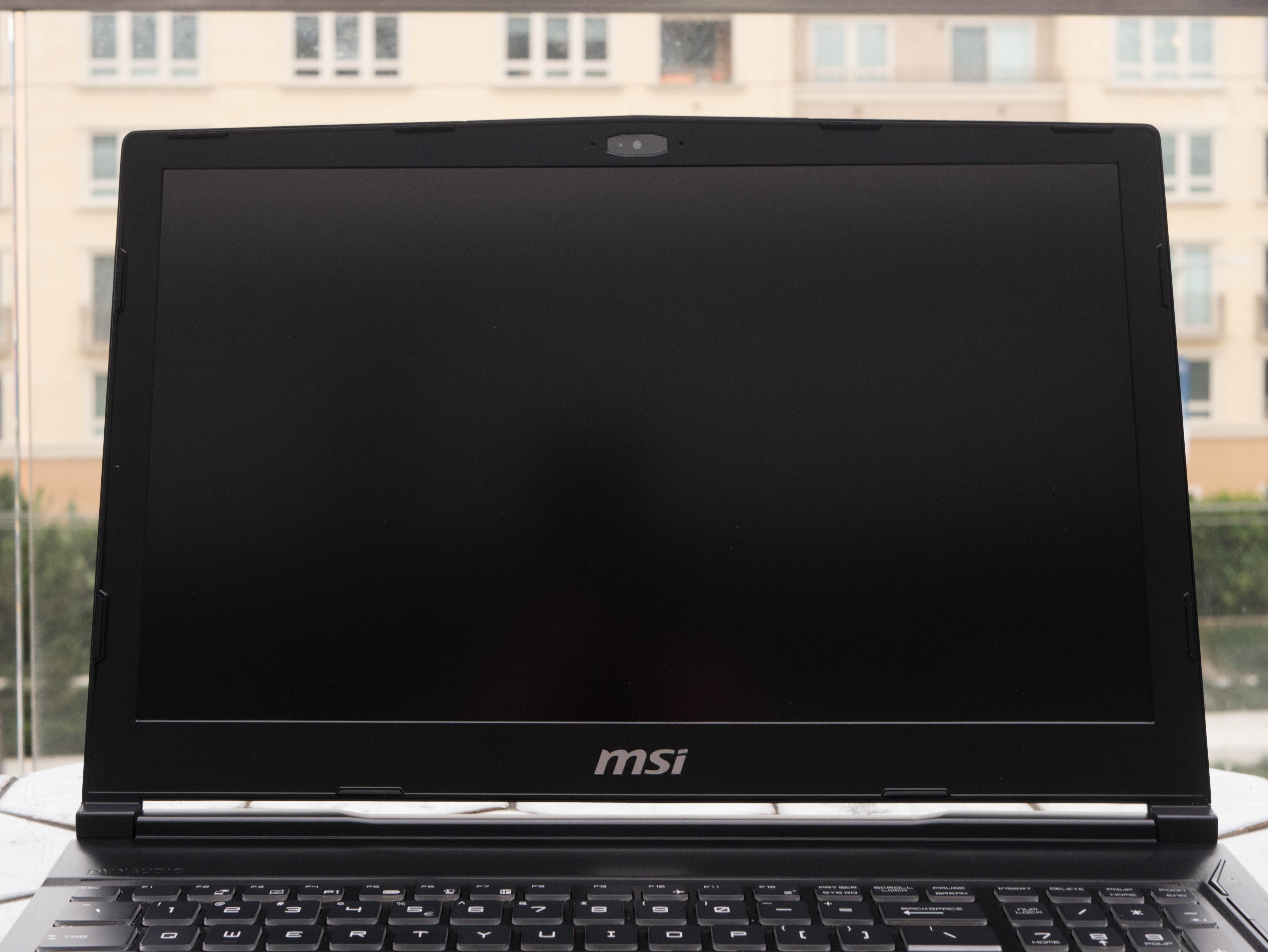Early Verdict
The MSI GE63VR Raider is a solid contender with great performance and an incredible display. However, we can’t help but feel that the Raider chassis was intended to be used with a lower end GPU, and the price doesn't make it competitive.
Pros
- +
Solid build quality and speakers
- +
Great performance
- +
Display has outstanding contrast, grayscale, and color accuracy
Cons
- -
Expensive for a GTX 1070 laptop
- -
Slow SSD speeds
- -
Average thermals
- -
Poor battery life
- -
Undersaturated display
Why you can trust Tom's Hardware
Introduction & Product Tour
We’ve tested quite a few high-end laptops lately, ranging from the luxurious Max-Q Asus ROG Zephyrus up to the $9,000 Acer Predator 21 X. Many of these laptops perform excessively well, but typically also suffer some sort of drawback you wouldn’t expect, like suspect build quality, poor thermal performance, or out-of-sync price. We think most gamers simply want solid performance without all of the gimmicky features.
The GE63VR Raider, one of MSI's latest, gets an Nvidia GTX 1070 GPU and the Core i7-7700HQ CPU. Thus, it lives at the upper end of what we'd call a mid-range gaming laptop these days. Time to put it through its paces.
Specifications
Packaging


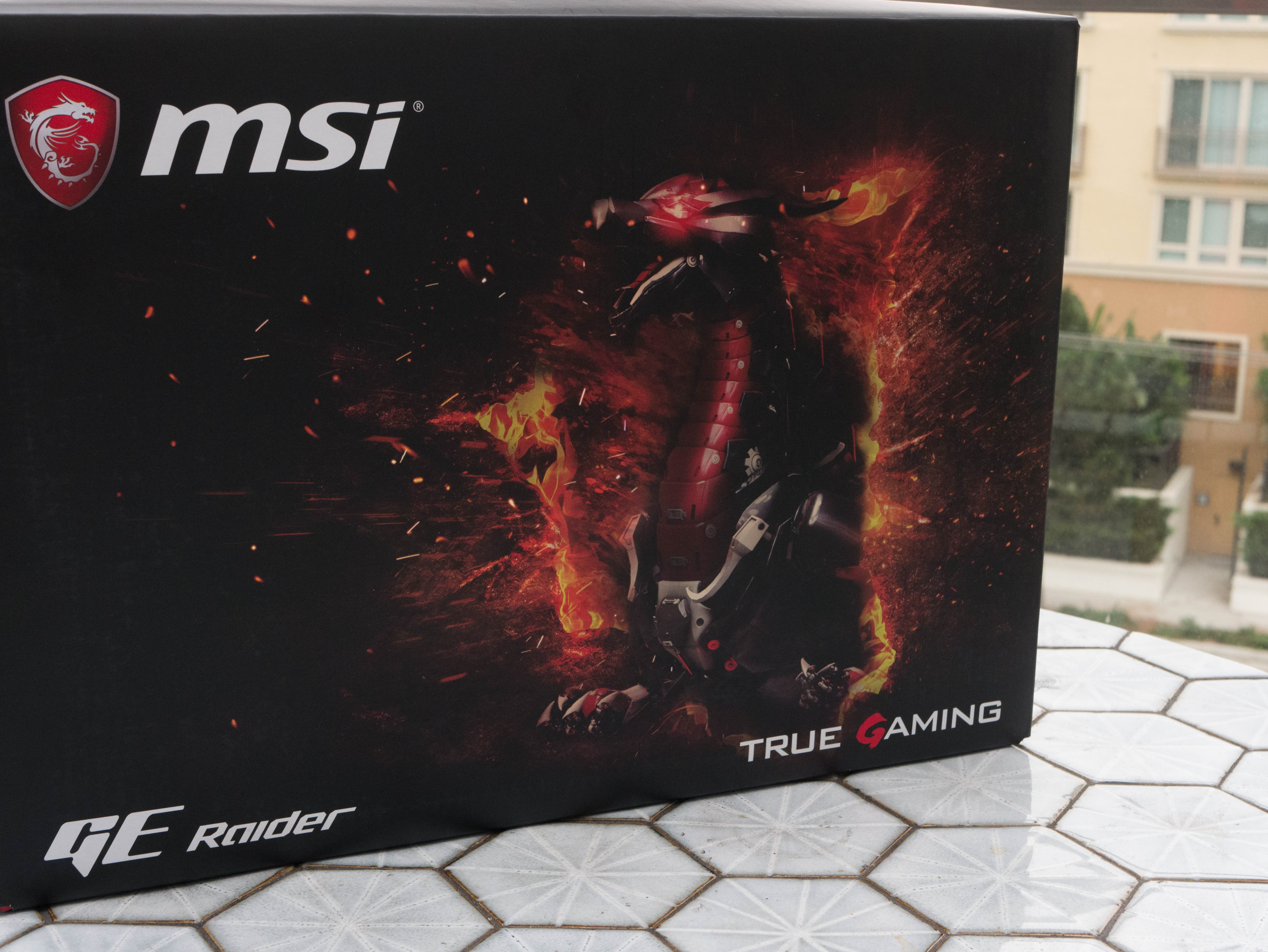



The GE63VR Raider’s packaging features MSI’s signature over-the-top gamer aesthetic. On the front cover, you’ll find a mechanical dragon tearing through an earthy backdrop. The rear cover lists the Raider’s features, including its per-key RGB keyboard, 120Hz display refresh rate, cooling technology, etc. MSI’s dragon shield emblem is present at every angle. The top of the package has a red plastic handle for easy carrying.




The box opens like a clamshell, revealing the Raider, which is wrapped in black cloth. Two slabs of closed-cell foam secure the laptop, and a final cardboard slab secures it from the rear. The rear slab functions as a compartment as well, holding the Raider’s 230W power supply. To the left, you’ll find an additional compartment for the AC power cord.
Beneath the Raider, you’ll find a hidden compartment housing the Quick Start Guide, Recovery booklet, Limited Warranty card, and an invitation to MSI’s rewards program.
The Raider’s package doesn’t stand out much, but it also doesn’t disappoint. You can rest assured that your laptop will remain safe in this handheld box, but that’s about it.
Exterior

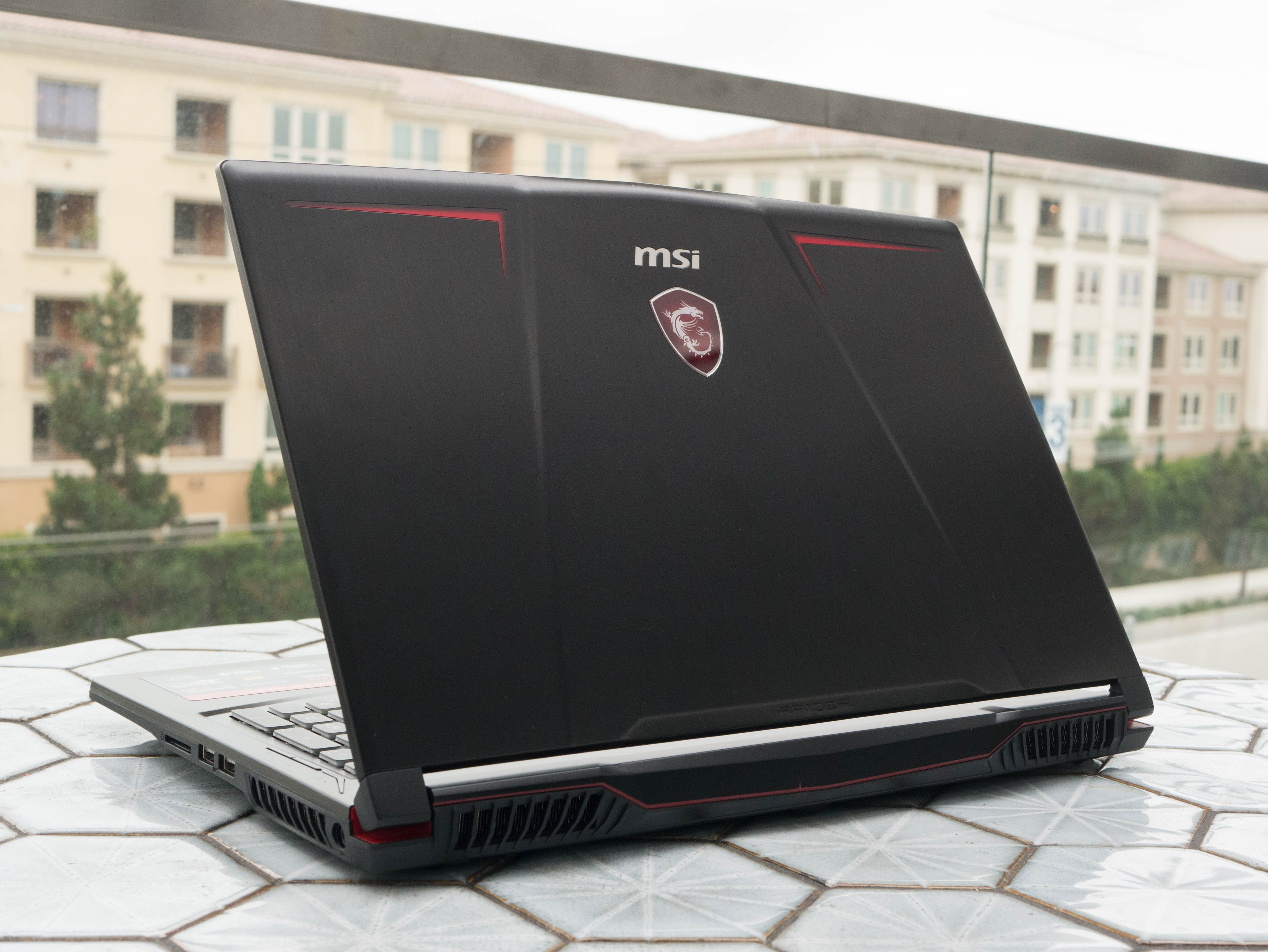




The GE63VR Raider’s lid is constructed in typical MSI fashion, with a sleek, black-brushed aluminum surface that retains oils easily, so you’ll have to clean it often. There are two angled accents running from the bottom of the lid to the top. Right next to the accents are two red light bars that illuminate when the system is powered. At the very bottom, right next to the hinge, a subtle “RAIDER” is engraved into the metal surface. Finally, MSI’s company logo and dragon shield adorn the middle of the lid. Like the light bars, the shield glows when the Raider is powered. The lid will flex with a fair amount of pressure, but not so much that the display’s safety is compromised.
Get Tom's Hardware's best news and in-depth reviews, straight to your inbox.

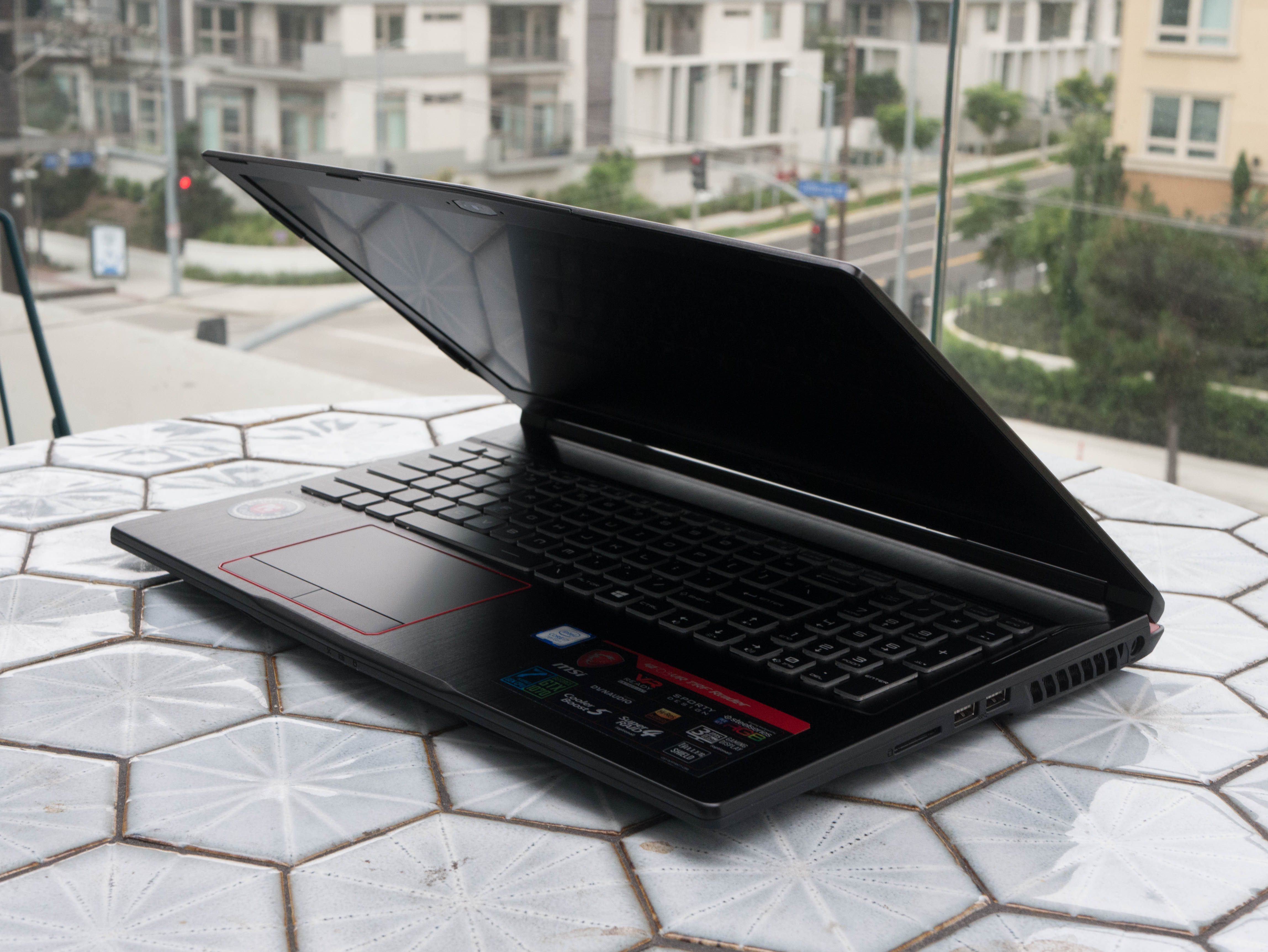





Moving inside, you’ll find the same brushed aluminum construction surrounding the input devices. Fingerprints and smudges are exacerbated because this surface will be touched often, so make sure to keep a cloth handy. The surface caves in around the keyboard, with additional accents engraved at the top. More engraving can be found on the left via the Dynaudio and Steelseries logos, a departure from the usual white printed logos on previous MSI laptops. The touchpad contrasts the rest of the black surface with its red border. Finally, there are three buttons to the right of the keyboard. These power the system, launch the SteelSeries engine, and maximize the fan speed.
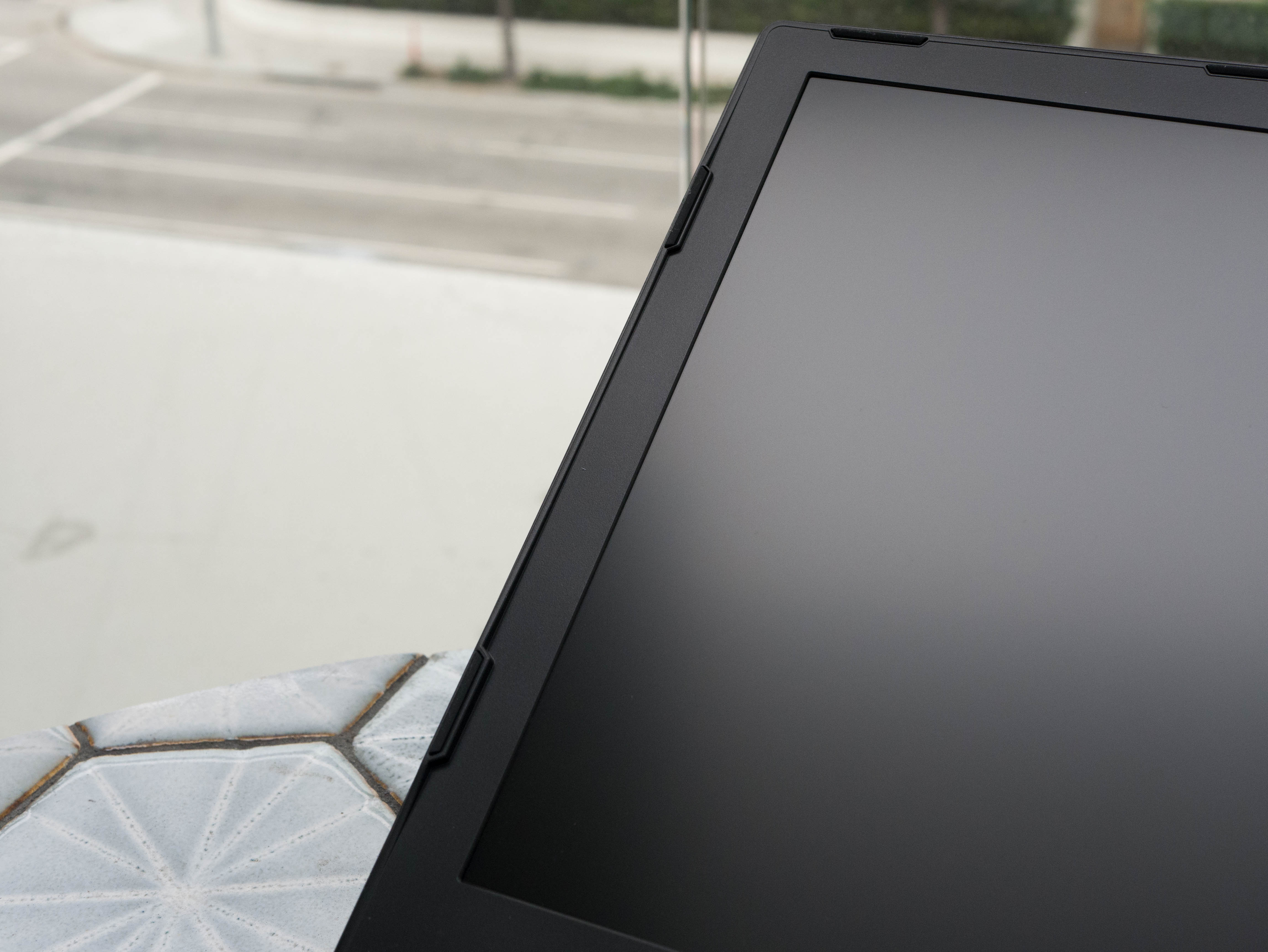



The Raider’s 15.6” display is surrounded by a relatively thin bezel. The sides are 0.5625” wide. The top bezel is also 0.5625” at the slimmest point and 0.75” at the widest point. The bottom bezel is the longest at 1”. There are two feet on each side bezel, two on the bottom bezel, and four on the top bezel to prevent the display from making contact with the laptop when closed. At the top, you’ll find a 2.0 megapixel camera surrounded by array microphones. Finally, the company logo is engraved on the bottom bezel in dull silver.




The sides of the laptop are split into two layers. The top layer is part of the aluminum construction and wraps its way around to the edges. The other half is made out of hard plastic, which is part of the bottom panel. The front edge angles inward, and is decorated by small indentations on each side. In the middle, you’ll find three status indicators. The side edges host two exhaust vents to expel heat. Moving to the back, you’ll find two larger vents that are designed like supercar exhausts. In between runs a red border for decoration.









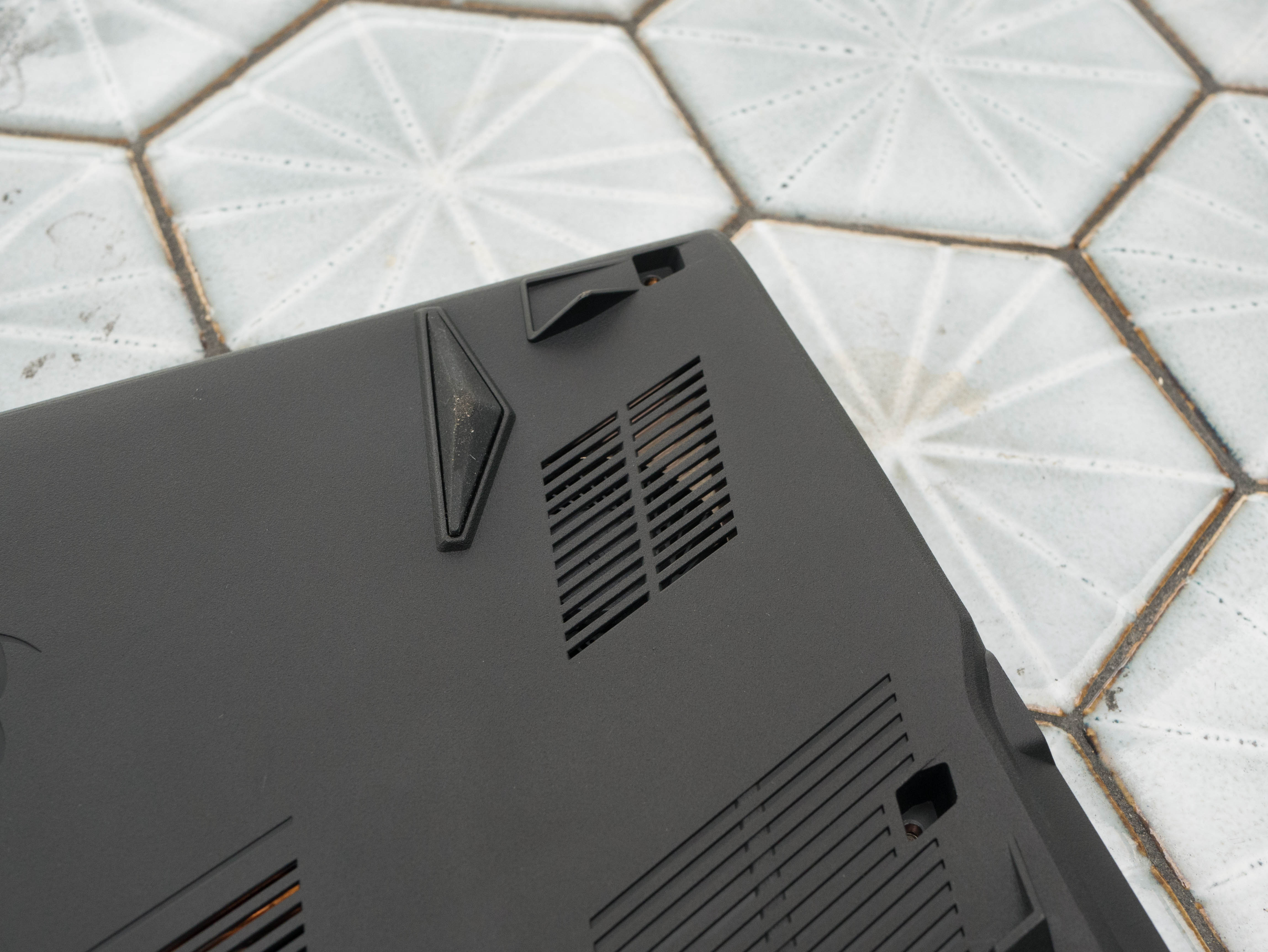

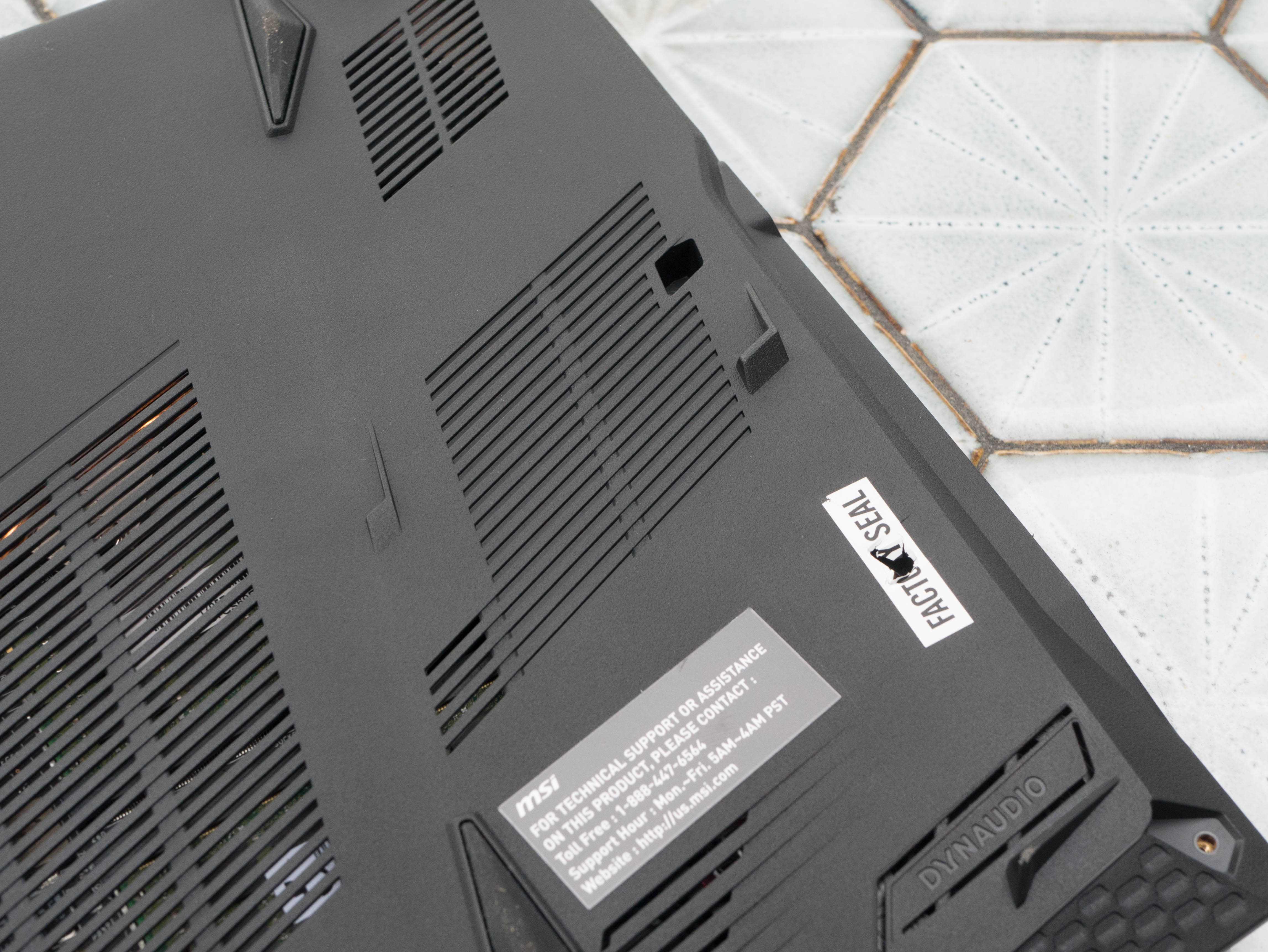
Continuing from the edges, the bottom panel eschews the brushed aluminum surface in favor of hard plastic. The bottom panel adopts a much more aggressive aesthetic than the sleek brushed surfaces, instead using hard angles, numerous stabilization feet, and even an engraving of the MSI dragon in the middle. There are four large rubber feet, one small rubber foot in the middle, and eight plastic feet keeping the Raider stable. The bottom cover is also littered with perforations. In the middle, two large vents allow heat to escape from the motherboard, while two smaller vents near the back act as air intakes for the cooling fans. There are two other groups of engravings on both sides, but these don’t have holes. Finally, there are cutouts near the front edge that allow audio to seep through.

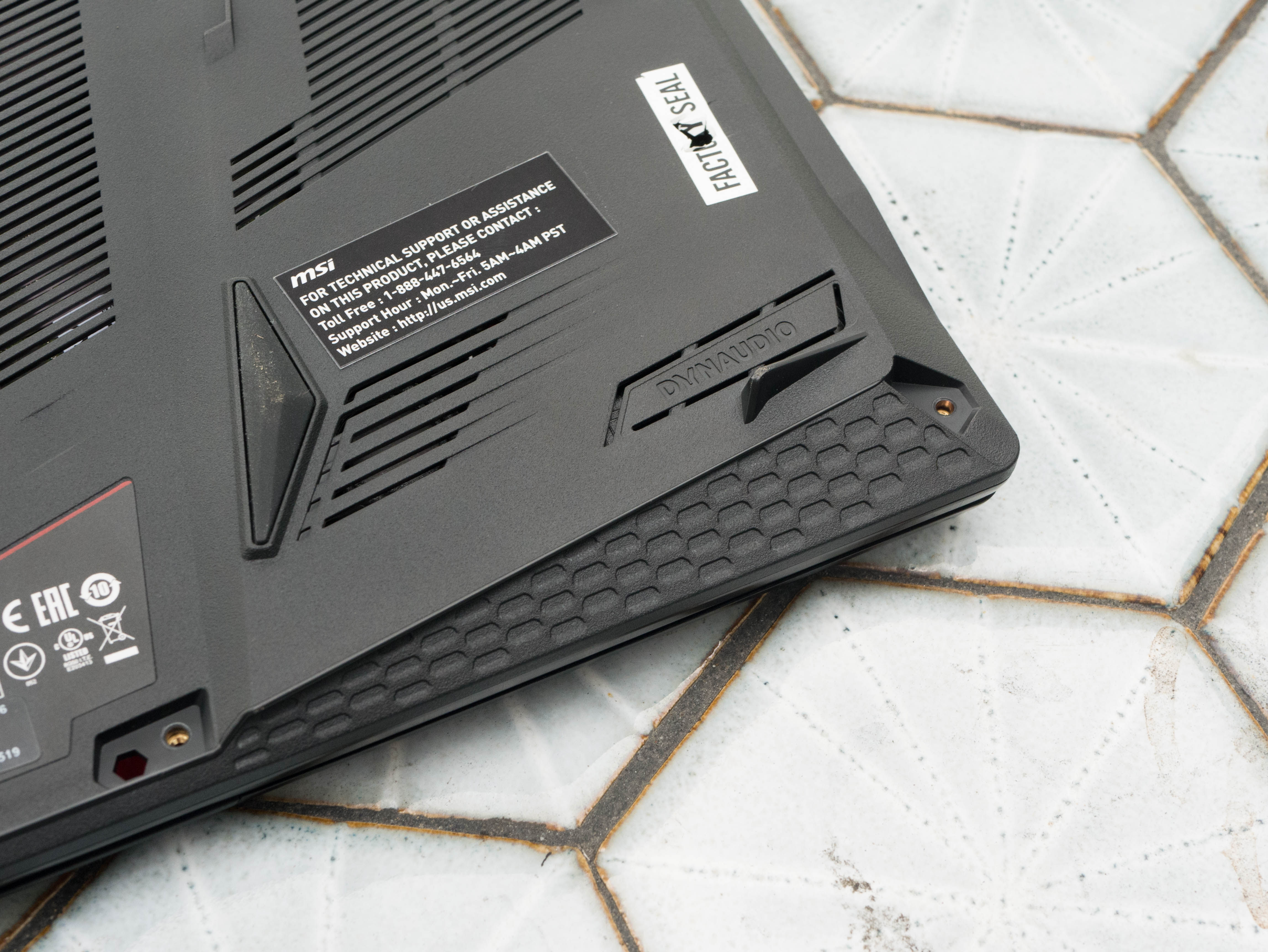
Speaking of speakers (pun intended), the Raider’s audio system is facing downward. In the past, we've criticized downward-facing speakers because of their muffled audio, but we're inclined to make an exception for the Raider. The size of the speakers more than make up for the misplacement, and the subwoofers complement them nicely, especially at high volume.

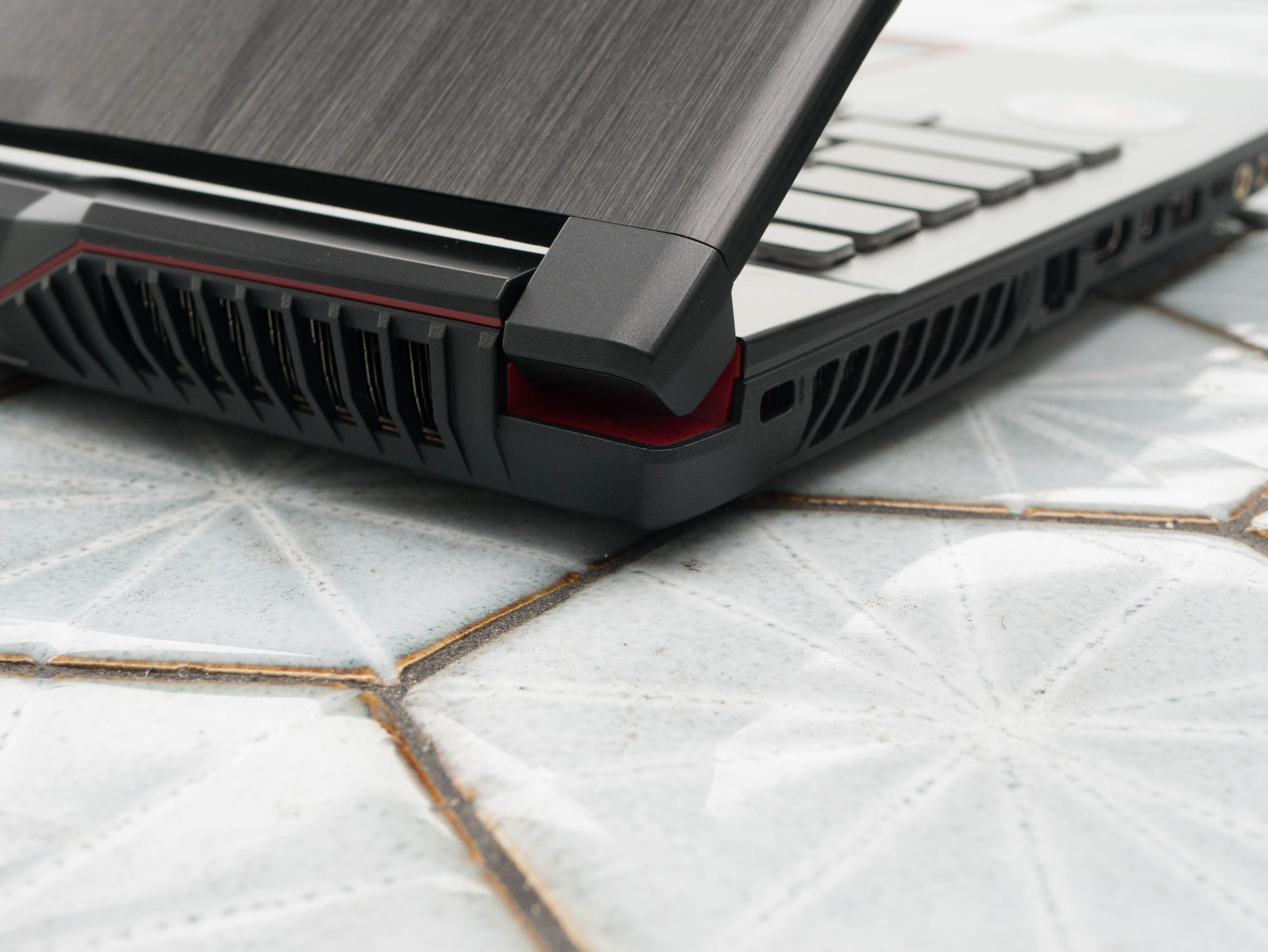
Unlike the outward-facing metal surfaces, the hinge is constructed out of plastic. It feels smoother and softer than the plastic used on the bottom panel, perhaps to complement the sleek metal surfaces. There are two angled accents in the middle of the hinge, a continuation of the accents from the lid. At the corners you'll find contrasting, red plastic. The hinge offers an impressive 150° of extension, which is more than you'll get with most gaming laptops.

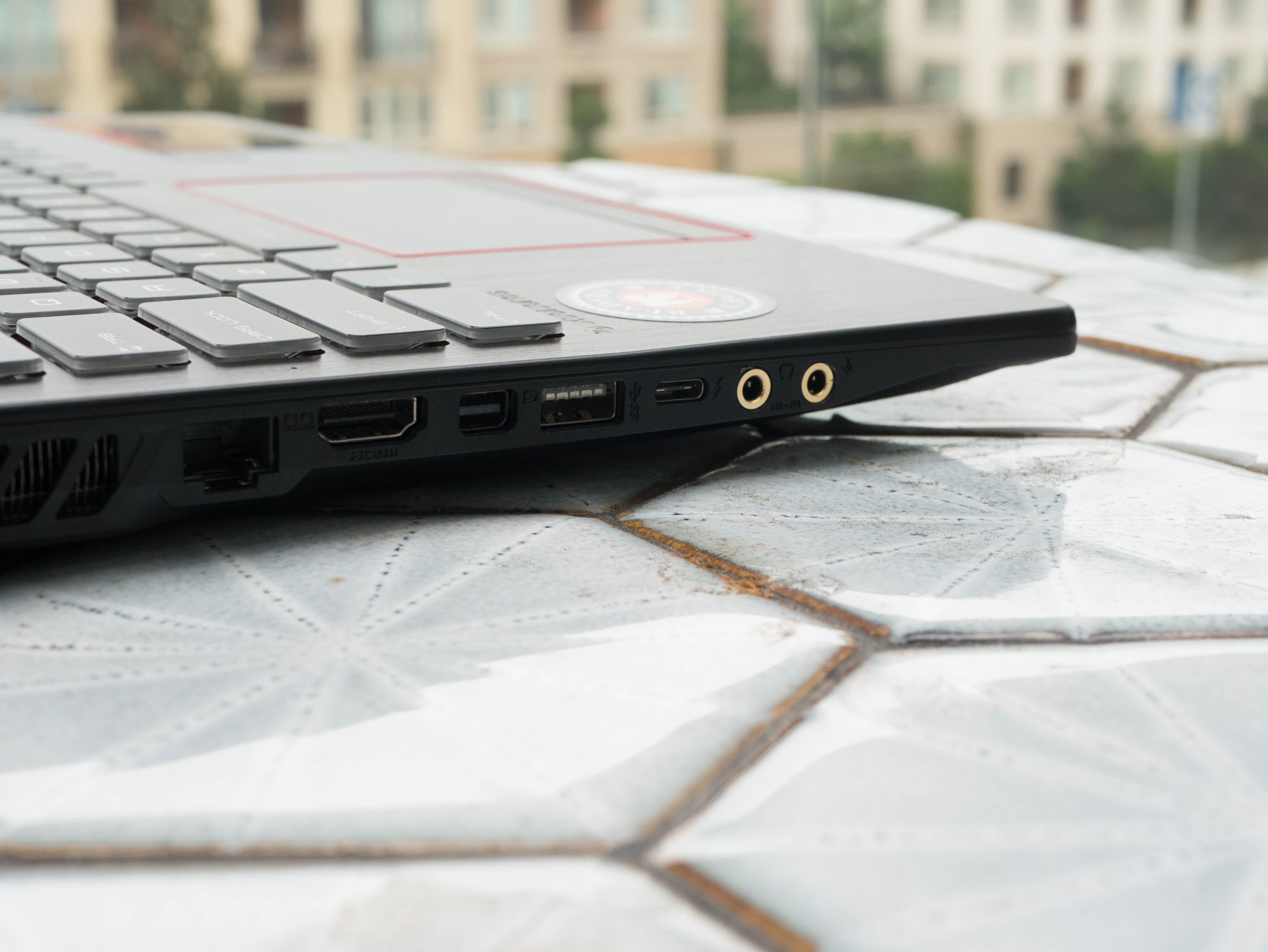
The GE63VR Raider doesn’t have very many I/O ports. On the right side, you’ll find a card reader, two USB 3.0 ports, and the DC power port. On the left side, you’ll find an RJ-45 LAN port, an HDMI port, another USB 3.0 port, Thunderbolt 3 over Type-C, a headphone jack, and a microphone jack.
Display
The GE63VR Raider features a standard 15.6” Full HD (1920x1080) IPS display, with a 120Hz refresh rate and 3ms response time. Many gaming-oriented laptops include G-Sync, but MSI doesn't include the variable refresh technology with the Raider.
The laptop includes HDMI 2.0 and Mini DisplayPort 1.2, although we usually see mDP 1.3 at this price range. This shouldn’t be a major issue, because resolutions above UHD are uncommon. Additionally, the Thunderbolt 3 over Type-C port can connect an external GPU dock or yet another display.
Input Devices




The MSI Raider features a full-length keyboard and number pad, courtesy of SteelSeries. As with all MSI laptop keyboards, the keys are evenly spaced and have a crisp, bumpy actuation, creating a comfortable typing experience. The keycaps have a white translucent font that allows the LED backlighting to shine through the keycaps with minimal backlight bleed.
The function row includes the following: F2 opens the Project menu, F3 toggles touchpad functionality, F4 launches a user-determined application, F5 switches the power setting to a power-friendly “ECO” profile, F6 toggles webcam functionality, F7 shifts between power profiles, F10 activates airplane mode, and F12 puts the Raider to sleep. In addition, “Fn + Arrows” and “Fn + Num 0” adjust audio settings. Finally, “Fn + Num -” and “Fn + Num +” adjust the keyboard backlighting brightness. The keyboard has a nifty feature that dims key lighting to just the function compatible keys when the Fn key is activated.
The touchpad offers excellent accuracy and comfortable tracking, although a film will build up over time. If the oil layer gets thick enough, you’ll experience some surface drag, but keeping the touchpad clean will ensure a seamless tracking experience. The touchpad offers no clicking functionality; MSI instead includes two separate left and right click buttons beneath the touchpad. These buttons offer a satisfying tactile feedback. Design-wise, the touchpad’s black surface complements the rest of the build, but it has a contrasting red border to highlight it.
Interior
The bottom panel is attached to the chassis with 10 screws. The panel will take a bit of effort to loosen; use a credit card or an opening tool to separate the panel from the side and from the front. With the panel removed, you can easily locate all of the interchangeable components.
You’ll find the M.2 slots buried beneath a removable PCB on the far right. To access the slots, remove three screws: two securing the small PCB to the bracket and one securing the bracket to the motherboard. Lifting the left speaker (which is on the right when looking at the Raider from the bottom) will grant easy access to the last screw.



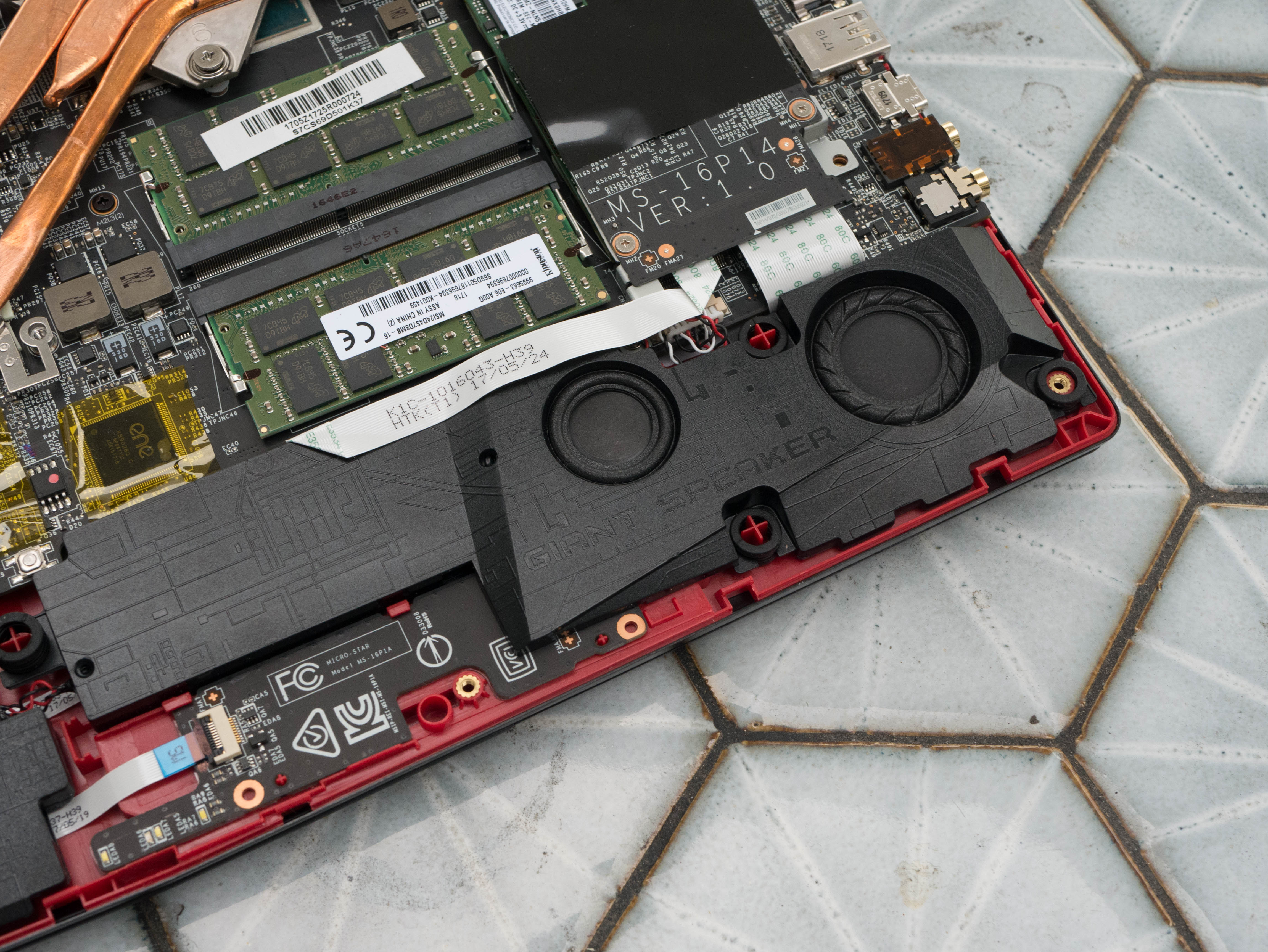
Next to the M.2 slots are four DDR4 memory slots; our Raider contains 32GB of DDR4-2400 RAM from Kingston. To the left you’ll find an Intel Dual Band Wireless-AC 8265, which handles the Raider’s wireless needs. Right next to it is a 2.5" SATA slot occupied by a 1TB 7200RPM HDD. Near the front lip of the laptop, you'll find the hefty sound system, consisting of two speakers and two subwoofers.






The cooling solution sits in the back right next to the 51Wh battery. It consists of two large exhaust fans, each accompanied by two sets of heat fins. There are two primary heat sinks: the one on the right cools the CPU, inductors, and MOSFETs. The left heat sink cools the GPU and its memory. Three heat pipes are dedicated to the GPU alone, while another heat pipe covers the GPU heat sink, inductors, and MOSFETs. One pipe hits the CPU heatsink, while the adjacent pipe passes over the heat sink and over the GPU memory. Finally, one pipe is dedicated solely to GPU memory.
Software
As with all MSI systems, the GE63VR Raider comes with several proprietary applications pre-installed to manage the laptop’s settings. Most notable is Dragon Center, which is MSI’s hub software.
From Dragon center, you’re given a handful of categorized tabs. The first tab is the App Portal, and from here you can create shortcuts to your favorite programs. You can even create and name subcategories for your shortcuts.
System Monitor gives you a glimpse at your system’s resources. You can see resource usage percentages, fan speeds, power plans, clock rates, temperatures, and network connectivity.
The System Tuner gives users comprehensive control over the Raider, and offers several subcategories through which to adjust the laptop’s settings. The subcategories we use most are the Shift, Fan Speed, and True Color tabs.
The Mobile Center tab allows you to connect your mobile phone to the Raider. If you don’t have MSI Dragon Dashboard installed on your phone, Dragon Center offers QR codes that will direct you to their download pages on the iTunes and Android stores. Once your phone is synced with the Raider, you can monitor its resource usage, tune the system to your liking, and even adjust RGB backlight settings.
Finally, the Tool & Help tab offers support options for new users. Here you can find the user manual, backup or recover your system, reach MSI’s help desk, register the Raider, calibrate your battery, or navigate through the Raider’s features.
In addition, MSI’s partnership with SteelSeries lets you use Steelseries Engine to adjust the keyboard’s settings. From here, you can adjust the per-key backlighting with a variety of effects, such as color shifting and multi-colored breathing. If you have SteelSeries peripherals with RGB functionality, you can sync the Raider’s keyboard and your peripherals using PrismSync.
MORE: Best Gaming Laptops
MORE: Gaming Laptop Previews
MORE: All Laptop Content


